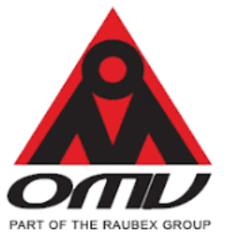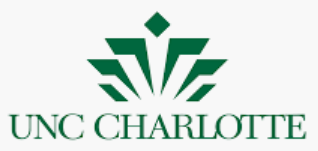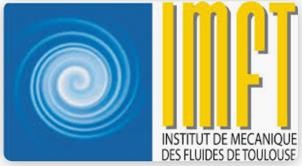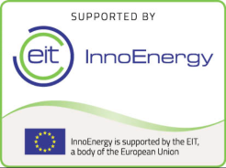Partnerships |
|
|---|---|
|
|
EDF Ekoserwis, PolandEDF Ekoserwis is a company in Poland that specialises in the use of Coal Combustion Products (CCP) that are derived from the power plant industry. In the past, the Emissions Control SC and Ekoserwis have started to collaborate on the potential development of a CCP industry in South Africa based on the model used in Poland. This partnership has potential to quickly expand the use of ash and in the future gypsum in South Africa taking no account that these products are already registered in Poland and within the European Union (EU). |
|
|
Oranje Mynbou en Vervoer (OMV), PotchefstroomOMV is a market leader in gypsum Production in Southern Africa that supplies various gypsum products to different industries. These include gypsum for agricultural use, synthetic gypsum for the cement industry, and hemi-hydrate and blended plaster products. OMV has an interest in acquiring alternative sources of various forms of gypsum such as FGD gypsum as its current feedstock are projected to last only a few more years. The Emissions Control SC and OMV has recently partnered to research the production of hemihydrates and dihydrates of calcium sulphate from the reaction between sulphur dioxide and limestone-based sorbents. |
|
|
ETH Zürich, SwitzerlandThe FenX group at ETH Zürich exploits mineral waste and transforms it into highly porous foams that can be produced through advanced processing methods, such as 3D printing. This allows FenX to produce porous materials with excellent thermal properties simply by exploiting abandoned and widely available materials. More importantly, FenX’s foams can be fabricated at ambient temperature releasing no CO2 emissions and are 100% recyclable. EPPEI EC SC and ETH Zürich aim to develop collaboration in the design of sandwich panels for pre-fabricated, modular, demountable, safe and affordable dwellings to replace existing shacks using coal combustion products including fly ash, slag and gypsum as the raw materials of construction. This could possibly be achieved through the application of the newly developed foam technology at ETH Zürich under the “FenX” project. This collaboration is of key importance for the Township emissions offset and living conditions improvement project. |
|
|
Steinmüller Engineering GmbH, Gummersbach, GermanyThe partnership between NWU and Steinmüller Engineering has been fruitful in the past years. The partnership has led to the development of an empirical plant-wide WFGD model that focussed on water consumption, and the minimization thereof through flue gas heat recovery. In addition, hard-to-find plant-scale WFGD measurement data has been obtained though this collaboration, which currently serves as basis for validation of a WFGD CFD model. |
|
|
University of North Carolina, CharlotteAlthough fly ash resistivity has been routinely used in empirical models that describe ash collection efficiency in ESPs, a different property, the permittivity, is conventionally used in CFD models to describe particle charging. Using the resistivity measurement data, obtained from the recommissioned resistivity oven, it is envisaged to correlate the resistivity with the permittivity. Prof Marciej Noras at the University of North Carolina, Charlotte, is currently assisting in obtaining permittivity data. |
|
|
Eskom RT&DA strong relation between the EPPEI EC SC and Eskom RT&D has been developed, and various laboratory facilities have been shared over the past years. In this framework, the resistivity oven and a pH-stat apparatus have been recommissioned at the NWU to facilitate research in ash characterisation and limestone reactivity, respectively. Also, the drop tube furnace facilities of RT&D have been used in deNOx related studies, while the QEMSCAN and XRF facilities have generated valuable information in the characterisation of ash and limestone samples. The SC also has a close partnership with the Environmental Monitoring division at RT&D. Currently joint projects measuring ambient air quality are on-going at multiple sites. This partnership will be important as the assessment of Eskom offset project start. |
|
|
Institute of Mechanics of Fluids of Toulouse (IMFT)Collaboration between NWU, WITS and IMFT (Institute of Mechanics of Fluids of Toulouse) is ongoing on gas-solid flows. The pulverized fuel conveying research at the Combustion Engineering SC at WITS, and the circulating fluidized bed research at the EC SC have much in common and as a result, research efforts are combined in this area. Both SCs have established separate ties with IMFT but for the common purpose of furthering and support of gas-solid two-phase flows research. Specifically, access to Neptune, the multiphase CFD research code of IMFT, was made available because of the collaboration. |
|
|
NRF SARChI Chair in Clean Coal TechnologyThis chair was initiated in 2013 and covers several aspects of the coal value chain. The chair hosts over 20 postgraduate students. The program contains varies topics including coal dewatering, coal beneficiation, gasification, biomass co-generation and smokeless fuel production. The chair also has a strong environmental leg and specifically the projects around the production of smokeless fuels for low income households fits within the Township emissions off-set IUP. |
|
|
AGH University, Krakow PolandA partnership has been built with the Energy group at AGH University in Krakow. The importance of this collaboration lies in the synergistic areas of interest in energy planning and modelling of emissions. In particular, the use of models to simulate future energy scenarios for South Africa and the emissions consequences is an attractive activity. In addition, the AGH group has expertise in advanced modelling of Hg emissions to and in the atmosphere. These overlapping interests will be further explored and exploited. |
|
|
InnoEnergy SELECT master’s ProgrammeThe collaboration with InnoEnergy’s SELECT master’s programme have assisted in systematic progress on finalising a detailed dwelling design that is to be implemented in various stages as part of the Township Emissions Offset and Living Conditions Improvement IUP. Collaboration between the EPPEI Emissions Control SC and SELECT have led to several proposed solutions that could potentially be applied to meet the aim of the Township emissions offset project. These include the use of a novel stove design to reduce domestic emissions in Townships and increase combustion efficiency and using insulating building materials derived from Coal Combustion Products (CCP, i.e.: ash, slag, and later gypsum) to improve thermal efficiency. |










